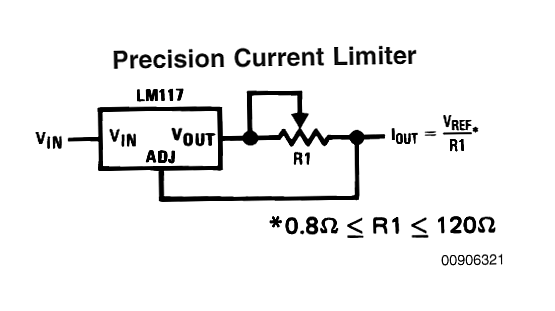The article reveals a simple regular constant current LED driver circuit that are available for easily working any specific preferred high watt LED.
The universal high watt LED current limiter circuit described here may be incorporated with any crude DC supply source to get an excellent over current protection for the attached high watt LEDs.
Why Current Limiting is vital for LEDs
We realize that LEDs are seriously economical devices which can be capable of generate stunning illuminations at relatively reduced consumption, in spite of this these products are highly susceptible particularly to heat and current which are complementary guidelines and influence an LED efficiency.
Particularly with high watt LEds which are likely to produce substantial heat, the above limitations turn out to be essential problems. If an LED is driven with higher current it will usually get hot beyond persistence and get damaged, while on the other hand if the heat dissipation is not managed the LED will begin drawing more current until it gets ruined.
Within this blogging site we certainly have analyzed a couple of adaptable function horse ICs for example LM317, LM338, LM196 etc which are usually linked with lots of excellent power regulating functions.
LM317 is ideal for managing currents up to 1.5 amps, LM338 will permit an optimum of 5 amps while LM196 is designated for producing as much as 10 amps.
The following we make use of these devices for present limiting application for LEds in the the majority of easiest feasible methods:
The first circuit enumerated below is simpleness by itself, utilizing only one determined resistor the IC could be set up as a precise current controller or limiter.

The figure demonstrates a adjustable resistor for setting the current limit, on the other hand R1 may be restored with a set resistor by determining it making use of the following formula:
R1 = Vref/current
or R1 = 1.25/current.
Existing might be various for distinct LEDs which enables you to be computed by isolating the optimum forward voltage with its wattage, as an example for a 1watt LED, the current could be 1/3.3 = 0.3amps or 300 ma, current for other LEDs could be computed in comparable fashion.
The above figure would likely assist the highest of 1.5 amps, for larger current ranges, the IC might be basically restored with an LM338 or LM196 as per the LED specifications.
Producing an existing regulated LED tubelight.
The above circuit can be extremely effectively useful for producing accuracy current managed LED tube light circuits.
General instance is drawn out below, which may be very easily altered according to the needs and LED features.

The series resistor linked with the three LEDs is measured by utilizing the following formula:
R = (supply voltage - Total LED forward voltage) / LED current
R = (12 - 3.3+3.3+3.3)/3amps
R= (12 - 9.9)/3
R = 0.7 ohms
R watts = V x A = (12-9.9) x 3 = 2.1 x 3 = 6.3 watts
Dear sir,
if i want to power up 10w led from the 230v what would be the circuit diagram will be. i want them to do highest power they can without burning them. i did the diagram of the 1w led and it works and i want to try it with 10w and 100w if possible. my main concern is to power them with 230v without transformers.
Dear Thila, you should strictly use a SMPS adapter for the LED and add a current controller in the middle, there’s no way you can use it directly with 220V through a capacitor or a resistor